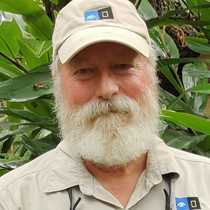Menorca, Balearic Group (Spain)
Menorca (also spelled Minorca) is the second largest of a group of four islands which make up the Spanish Balearic Archipelago. Menorca is an ancient island, full of history and tradition, and throughout the centuries it has been a part of many great civilizations.
We arrived at the eastern end of the island in the late morning, took aboard a local pilot, and berthed in the magnificent harbour of the capital city of Maó (or Mahon). This is considered the finest natural harbor in the entire Mediterranean Sea and for this reason was coveted and occupied by the British during much of the 18th century.
Humans have inhabited Menorca for more than 8,000 years, but the first people to leave significant evidence of their civilization were of the Bronze Age Talayot Culture, which started about 1200 BC. These people built many large megalithic monuments scattered all over the island, including the Taula that we found at Torralba d’en Salord. This very impressive T-shaped monument (see Figure A) has not been restored, so we know it has been standing like this for more than three millennia. Archaeologists don’t understand its significance completely, but it is believed to be a religious site or a giant calendar or a celebration site of the famous Culture of the Bull that was once so important throughout the Mediterranean…or a combination of the three.
Walking around the ruins about this site, we saw an archaeological timeline of the succession of cultures, invaders, and colonizing powers that have dominated Menorca, including Greeks, Carthaginians, Pirates, Romans, Vandals, Visigoths, Moors, Catalans, Spaniards, and British.
Menorca, with a permanent population of 62,000 people, is only 30 miles (48 km) long and its width varies from 6-12 miles (10-19 km). The total land area is 266 sq miles (689 sq km), while the coastline is an impressive 125 miles (200 km) in length…the entire island is really almost all coast. We drove the entire length of the island, which at this time of year was very green and lush. Along the way, we stopped at Mount Toro, the highest point of the island at 1,178 feet (357 meters). Here stands a monastery and the shrine to the island's patron saint, the Virgin Mary. There is a small monument here that is important to both Menorcans and Americans…well, at least to Floridians like me. It is devoted to Father Campos, who went to Florida to minister a large group of Menorcans who were recruited in 1768 as indentured servants to establish British plantations of indigo, sugarcane, cotton, and rice. An additional 500 African slaves were purchased to handle the heavy work in starting the operations, but tragically, the slave ship sank with a loss of all hands before it arrived. The Minorcans (as they are known in Florida) quickly formed the colony of New Smyrna, located on Florida’s Atlantic coast, but within a few years, about 2/3 of them had died from diseases, poor diet, inadequate housing, etc., and the survivors moved north to St. Augustine.
One group of guests, however, opted for a more nature-oriented trip that avoided the ancient ruins and visited a marsh habitat and a pinewoods near a beautiful beach for some serious bird-watching. We all ended up at Ciutadella (or Ciudadela), the old capital at the western end of the island. This traditional little port city is filled with attractive Spanish-styled buildings and an impressive town square known as Plaça des Born. The town is centered about the magnificent Catalan Gothic Església Catedral de Menorca, which is the only public building that survived the fearsome onslaught in 1558 by the Turks, under Barbarossa, who destroyed the city and took nearly 3,500 of its citizens to the slave markets of Istanbul.
At the end of the day, we used our Zodiacs to cruise out through the beautiful port (Figure B) on our return to the ship.




